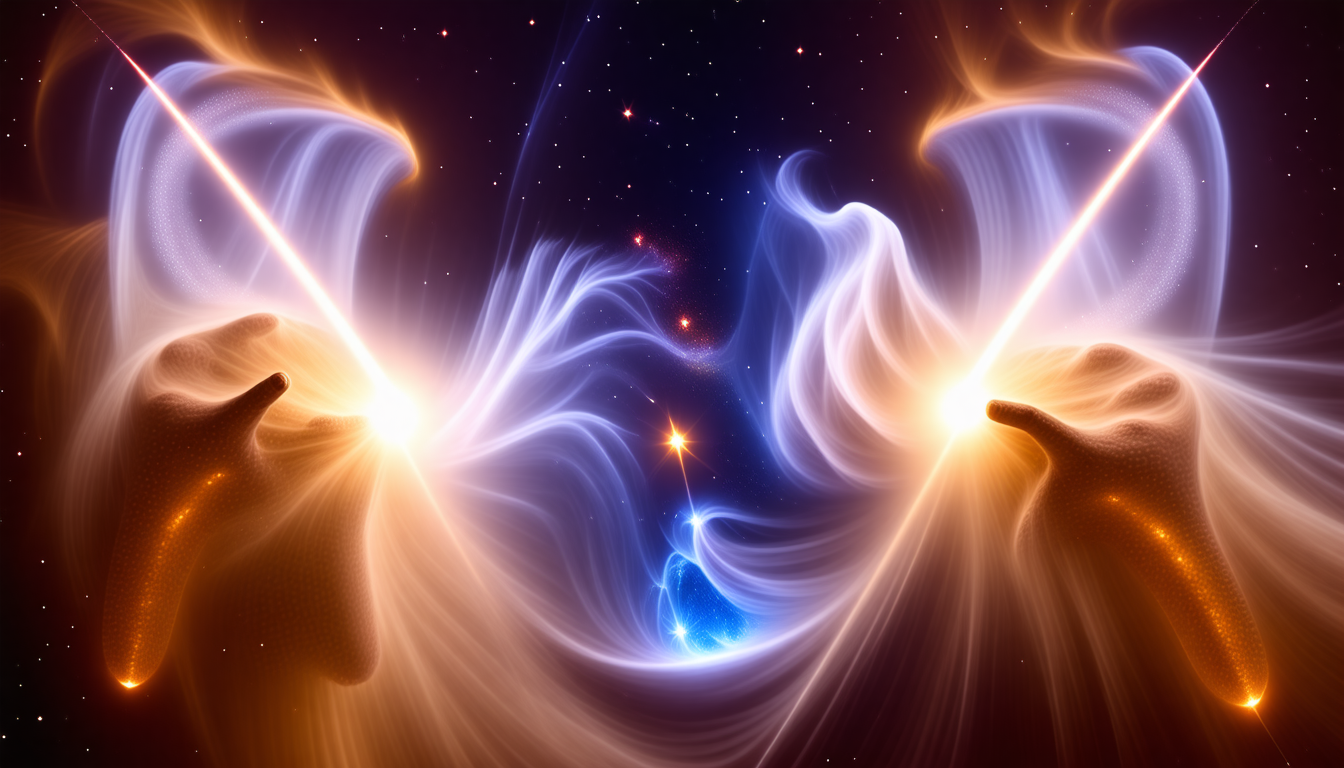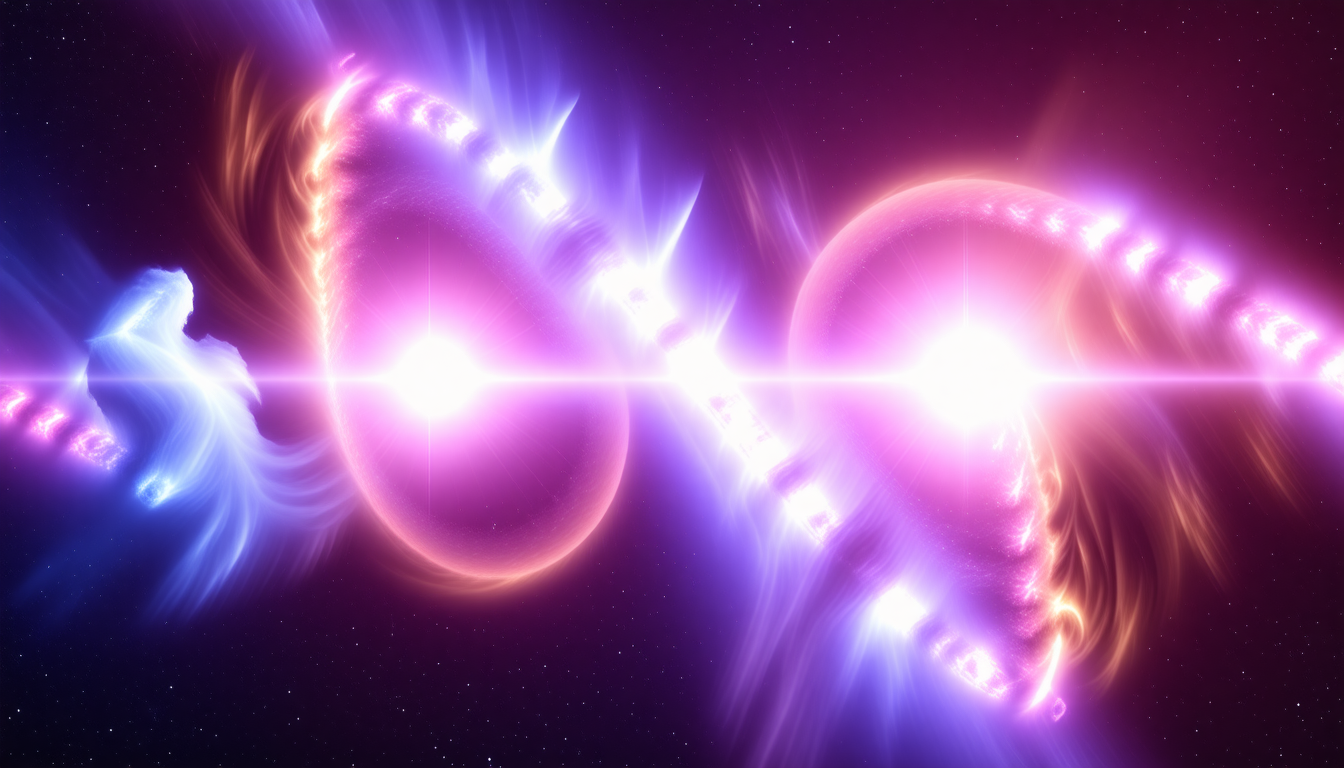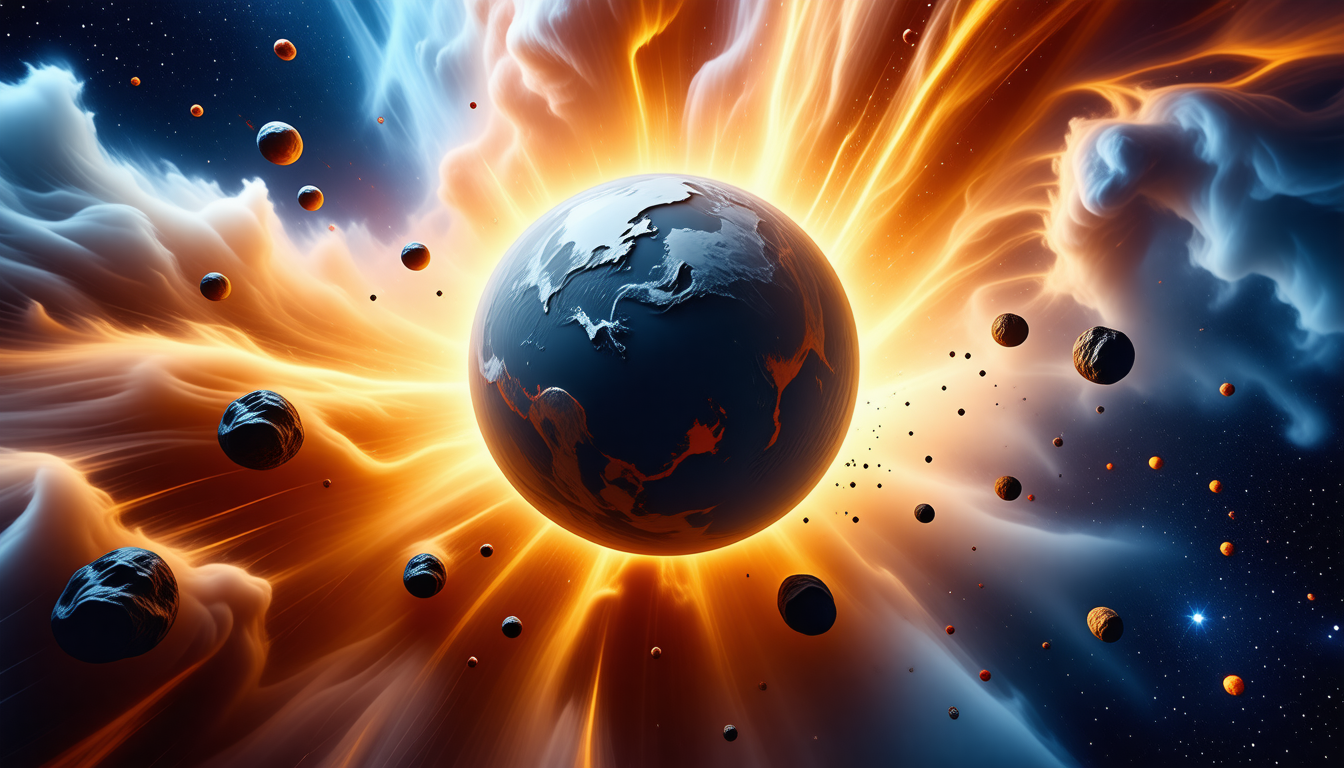Revolutionizing Our Understanding of Star Formation

Webb Telescope Discoveries in Star Formation
The James Webb Space Telescope (JWST) continues to revolutionize our understanding of star formation, shedding light on processes that have remained elusive for decades. Recently, astronomers have made astonishing discoveries in the WL20 star system, nestled within the Rosette Molecular Cloud, a dark and dense nebula that absorbs visible light. Located just 420 light-years from our solar system, this region is a beacon for researchers delving into the birth of stars. Its proximity offers a rare opportunity to observe stellar formation in its nascent stages.
In July 2023, marking a year since its inaugural observations, JWST unveiled detailed infrared images of this molecular cloud, capturing approximately fifty stars, most comparable in mass to our Sun. Among these stars, researchers identified one that appeared younger than its counterparts. By combining JWST data with that from the Atacama Large Millimeter/submillimeter Array (ALMA), scientists discovered that this object represents a binary star system. Each star in the system is cloaked by its own outflows of material, known as jets, allowing astronomers to study the intricate interplay of their formation.
This dual star system presents a remarkable case of accretion and outflow dynamics, a fundamental aspect of star formation. The synergy between JWST’s capabilities in the near-infrared spectrum and ALMA’s expertise in millimeter-wave observations enables researchers to decipher the complex physical processes at play. Notably, ALMA provides high-resolution maps that reveal the characteristics of circumstellar disks around each star, and further examination has uncovered that these disks extend to 100 times the distance from the Earth to the Sun. Such findings are pivotal, offering insights into the conditions that foster star and, eventually, planetary formation.
Importantly, the use of JWST’s Mid-Infrared Instrument (MIRI) was crucial for detecting the presence of the aforementioned jets. Researchers were able to identify their chemical composition, which includes ionized iron, nickel, and argon. This chemical data can illuminate the processes that are crucial to understanding how stars accumulate mass, as well as the conditions that might eventually lead to the formation of planetary systems.
The significance of this discovery cannot be overstated. The ability to observe these jets and disks melding together offers a direct glimpse into the mechanisms of star formation. In the grand tapestry of the universe, this intricate interplay might hint at similar processes occurring throughout other regions of star formation across the cosmos. Moreover, the potential to study binary star systems like WL20 enhances our knowledge of how stars interact not only with each other but also with the surrounding environment, which profoundly impacts their evolutionary paths.
Looking through the lens of the JWST, we are privileged to watch the unfolding stories of star formation, with all its complexity and beauty. The continued exploration of such stellar nurseries empowers scientists to unravel the cosmic phenomena that birthed our own solar system and billions of others. This is just the beginning; as JWST collects more data, the narrative of stellar birth and evolution will undoubtedly evolve into a more comprehensive understanding of our universe.

Collision Evidence in Nearby Star Systems
Recent observations by the James Webb Space Telescope have unveiled the remnants of a colossal asteroid collision in the stellar system Beta Pictoris, offering astronomers a unique opportunity to study the violent processes that govern planetary formation. This star, located approximately 63 light-years from Earth in the constellation Pictor, has long captivated scientists due to its youthful age—estimated to be between 8 to 20 million years—allowing for the timely observation of planetary formation akin to the processes that shaped our own solar system.
Beta Pictoris is noteworthy not only for its brightness—being nearly twice as massive as our Sun and shining nine times brighter—but also for its complex circumstellar environment. The system is known to host two gas giant exoplanets, orbiting at varying distances that mirror our own solar system’s configuration. The first exoplanet, akin to Saturn, lies approximately 10 astronomical units from the star, while a closer companion resides within just three astronomical units.
By using sophisticated instruments from the European Southern Observatory, astronomers confirmed the presence of these gas giants and expanded their focus to the surrounding debris disks, where the drums of cosmic chaos are incessantly beating. Previous data from the Spitzer Space Telescope, dating back to 2004, suggested stability and a regular replenishment of the dust clouds surrounding Beta Pictoris. However, the latest high-resolution data from JWST unveiled dramatic changes in the energy emissions from the dust, indicating that a cataclysmic event had transpired.
Astrophysicists discovered signatures of a significant disruption likely caused by the collision of enormous planetary bodies—events that can send shockwaves through a solar system, scattering debris into diverse orbits. The evidence indicates that this collision and subsequent events occurred roughly two decades ago, producing a massive amount of dust estimated to be 100,000 times the mass of the asteroid believed to have contributed to the extinction of the dinosaurs. As astronomers sift through this cosmic wreckage, the particle sizes and compositions provide clues to the processes at play during formation periods.
These findings lead us to theorize that the Beta Pictoris system is currently experiencing an important evolutionary phase. The explosive dynamics observed here might not be atypical for young solar systems, raising profound questions about how frequently such catastrophic events occur across the cosmos. Do other systems witness similar upheavals that shape the landscape of their planetary configurations?
This research sheds light not only on the transitional phases of planetary formation but also on how diverse planetary systems can develop characteristics reflective of their environments. The evidence points to an active childhood for Beta Pictoris, with its gas giants forming amidst chaos—potentially influencing the geophysical and atmospheric properties of terrestrial planets that might one day arise from the debris.
In the landscape of modern astronomy, the intersection of advanced observational capabilities and theoretical astrophysics is paving the way for a more nuanced understanding of planetary genesis. While the data gathered by JWST promises to unravel the mysteries of solar system formation, the implications arise beyond just Beta Pictoris. It opens up a panorama of possibilities when we think whether our own planetary evolution echoed similar violent beginnings amid primordial chaos, and how the remnants of such explosive processes may yet harbor the keys to life as we know it.
As we engage with these dazzling findings, we are not merely spectators of cosmic events but active participants in a grand exploration of the cosmos, where each collision and formation paints the portrait of existence itself—reminding us that within the vastness of space, the stories of incredible phenomena await our discovery.

Insights into Exoplanet Formation
The latest observations surrounding exoplanet formation tell an extraordinary tale of cosmic drama, particularly exemplified by the Beta Pictoris system. In this profoundly intriguing stellar environment, the birth and evolution of planets unfold within a tapestry defined by violent collisions and the chaotic interactions of celestial bodies. The significance of this system became even more pronounced as astronomers utilized the advanced capabilities of the James Webb Space Telescope (JWST) to peer into this region’s dynamic processes.
Beta Pictoris has always been a star of interest—being one of the brightest stellar objects in the southern sky and a mere 63 light-years away from Earth. What makes this system particularly captivating is its youth, having formed approximately 8 to 20 million years ago, which situates it within a critical phase of planetary development. This youth not only grants astronomers the privilege to witness planet formation in real-time but also gifts them with the excitement of potentially observing the very processes that led to the birth of our own solar system.
As researchers utilized data from both JWST and the European Southern Observatory, they confirmed the presence of two gas giant exoplanets circling Beta Pictoris at varying distances—from a Saturn-like distance of about 10 astronomical units to a much closer companion within three astronomical units. These gas giants are still evolving, their formation intricately linked to the volatile conditions of their stellar playground. The remarkable aspect of this system is the large debris disk that encircles the star, an area filled with remnants of primordial material—pristine substances leftover from the star’s formation. It’s within this chaotic region that our most riveting insights regarding exoplanet formation take shape.
The recent findings from JWST allowed astronomers to analyze the dynamics of dust and debris surrounding Beta Pictoris, revealing that significant changes have occurred in the dust clouds over time. Where previous observations through the Spitzer Space Telescope suggested the stability of these dust clouds—seemingly calmly replenished—the newer data painted an entirely different picture. The dust’s energy profile showed dramatic alterations, indicating a substantial cataclysm that likely stemmed from colossal asteroid collisions. Such violent dynamics are not just a backdrop; they are central to understanding how planets coalesce from swirling matter in their formation stages.
The magnitude of the material resulting from these collisions is staggering—researchers estimate that the dust produced was around 100,000 times the mass of the asteroid believed to have contributed to the extinction of the dinosaurs. This colossal output not only reshapes the dynamics of the existing planetary bodies but also provides a fertile ground for the formation of terrestrial-like planets that could join the cosmic choir. Given this assessment, we may surmise that around such young stars, these tumultuous collisions might be standard fare. As such events catapult debris into chaotic orbits, they offer tantalizing opportunities for new worlds to emerge from the chaos.
In essence, the observations surrounding Beta Pictoris provide not just evidence of ongoing planetary formation; they illuminate the intricacies of how such processes can differ across systems. By integrating findings about composition, particle size, and energy emissions, scientists are honing their understanding of the factors that dictate the emergence of rocky planets compared to larger gas giants, raising profound inquiries about the mechanisms that govern planet formation throughout the universe.
This research acts as a window into the broader cosmic picture, prompting questions about how often similar violent disruptions and interactions contribute across various stellar systems. Do other systems exhibit similar tumult, leading to their unique formations? These inquiries ripple outward, beckoning us to ponder the cosmic prevalence of planetary configurations. Notably, we begin to appreciate that our solar system’s formative history may not have been as unusual as we might think; it could share a legacy steeped in such cataclysmic events.
Moreover, the revelations emerging from Beta Pictoris resonate with the larger narrative of how life might arise elsewhere in the universe. The complexities introduced by collisional debris and its interactions hold essential clues about the atmospheric composition and water content that form the building blocks for life. The dynamism showcased by these planets tells us that the universe is not static but a vibrant theater playing host to creation and destruction, thus preparing the stage for an endless cycle of formation.
As we harness the JWST’s unparalleled capabilities, we not only witness the birth pangs of planets like those in Beta Pictoris but also recognize that these events capture a universal story of existence that transcends our solar system. We are reminded that, by deciphering the enigmatic processes in these distant worlds, we not only better understand the cosmos but also our place within it—a tapestry woven together by stars, planets, and the spectacular interplay of forces that govern their existence.
Understanding Protostar Dynamics and Jet Alignment
The James Webb Space Telescope (JWST) has remarkably transformed our understanding of the formation of protostars, especially in terms of their dynamics and the alignment of jets emitted from them. New insights are emerging from detailed observations of the Snake Nebula, an active star-forming region located approximately 1,300 light-years from Earth. This region is characterized by its youth, with some protostars within it being no older than 100,000 years—just a blink in the cosmic time scale.
Recent images captured by JWST’s Mid-Infrared Instrument (MIRI) have unraveled the complex structures of these nascent stars. Among the notable features, a high number of protostars display well-defined bipolar jets that stream out from their polar regions. These jets, often stretching across vast distances, represent the material expelled as the protostar attracts surrounding gas and dust for its growth. What is particularly significant about this observation is the remarkable alignment of these jets; nearly all observed jets are directed in a coherent orientation within the spatial frame of the nebula, suggesting a foundational ordering imposed by the parent molecular cloud from which these stars form.
This discovery aligns closely with current theoretical frameworks that posit the influence of magnetic fields and rotational dynamics in star formation processes. As material accretes onto a protostar, it spins, creating powerful magnetic fields that help expel excess material in the form of jets. The coherent directionality of these outflows hints at a grander scale interaction with the initial gas and dust cloud, which not only helps in the formation of the stars but may also dictate their rotational movements and even their positional arrangements within the nebula. It raises questions about whether such organized structures might be commonplace in protostellar environments throughout the cosmos.
Furthermore, the research team has unearthed details regarding the sizes and compositions of the protostellar disks surrounding these young stars. These disks, composed primarily of gas and dust, are crucial in determining the eventual planets that may form around the stars. The fact that JWST can resolve features in these disks less than one parsec in size highlights the telescope’s unparalleled sensitivity and resolution capabilities. Accretion processes within these disks are foundational to understanding the formation of planetary systems, as they provide the material necessary for building worlds.
Of particular interest is how the properties of these jets and disks might interact with their surroundings. For example, the energetic outflows can carve pathways through the dense material of the nebula, influencing the motion of surrounding material and possibly leading to the formation of new stars or the dispersal of gas and dust over time. Additionally, the jets may play a vital role in regulating the accretion process, acting as a pressure valve that balances the gravitational forces at work.
One of the critical questions remaining is how long the orderly structure observed can persist before stellar interactions and the chaotic environment of star formation surely disrupt it. Current estimates suggest that the coherent orientation of the protostellar jets might only be preserved for about 100,000 to a million years—a relatively short window in the evolution of a star. This transient nature underscores the dynamic and often chaotic processes behind stellar birth. As protostars mature, they may develop complex behaviors that further complicate their interactions and alignments, possibly contributing to stellar binaries or clusters.
Additionally, the observations made with JWST facilitate an intriguing inquiry into the conditions that lead to the formation of similar jets and disks across various stellar nurseries in the galaxy. As researchers gather more data about different regions of star formation, they can begin to formulate a comprehensive view of the range of star-forming scenarios and how environmental variables influence the unique characteristics of jet alignment and disk formation.
Ultimately, the implications of these findings extend beyond mere observational prowess. They serve as a stepping stone towards understanding the universality of star formation mechanics, the emergence of planetary systems, and potentially the conditions necessary for life to arise. As we continue to explore with JWST, each new revelation spins a thread in the intricate tapestry of the cosmos, inviting ever more questions about our place in the universe and the processes that govern the birth of stars and their accompanying systems.